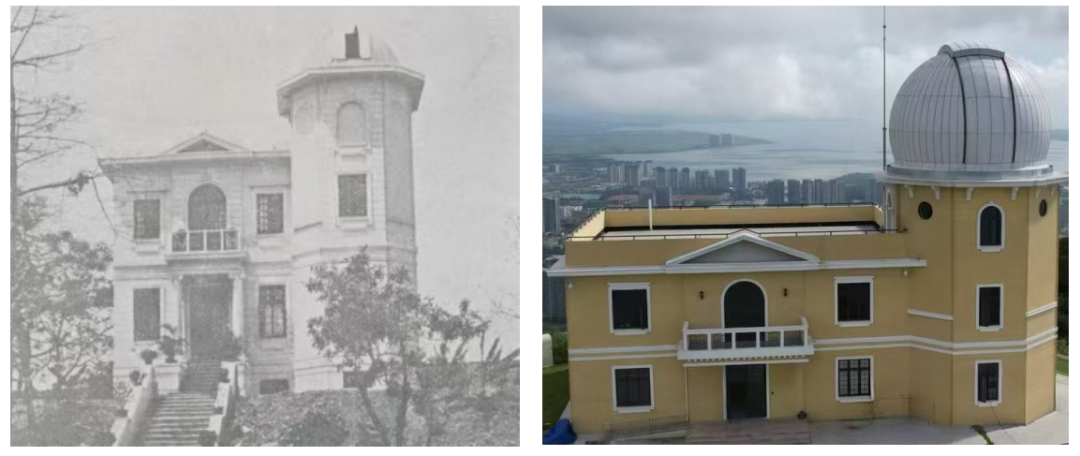On September 20, Sun Yat-sen University (SYSU) inaugurated a new observatory on its Zhuhai campus, coinciding with the 10th anniversary of the School of Physics and Astronomy. The observatory’s architectural design replicates the original SYSU Observatory built in 1929 on Wenming Road in Guangzhou—the first astronomical observatory established by a Chinese university.

The former observatory on Wenming Road in Guangzhou (left) and the new-inaugurated observatory on SYSU’s Zhuhai campus (right).
Equipped with a 1.2-meter telescope, the newly opened observatory now boasts the largest aperture telescope dedicated to teaching among Chinese universities. Beyond its educational role, the observatory is also designed to support cutting-edge astronomical research.
Perched atop Da Nan Mountain on Zhuhai campus, the observatory site is adjacent to the laser ranging station of the Tianqin Project, which underscores its integration into SYSU’s major space science initiatives.
Boasting approximately 120 clear observing nights per year, the location offers favorable conditions for astronomical observations.Given the potential threat of typhoons in the region, the observatory is designed to withstand typhoons of up to Category 12, ensuring the facility’s long-term operational stability.

On the left is the Laser Ranging Station of the Tianqin Project; in the middle is the 13-meter-diameter Satellite Ground Receiving Station; on the right is the Sun Yat-sen University Observatory on Zhuhai campus. (Photo by Gao Si)
Scientific observations are now underway at Sun Yat-sen University Observatory, which is scheduled to be formally integrated into courses in the spring 2026 semester. The facility will also serve as a public science outreach base open to the broader community.
SYSU pioneered astronomy education in China by founding the nation's first astronomy department in 1927. The university later built three observatories in Guangzhou and Shaoguan, nurturing a number of leading astronomers, including China’s first female astronomer, Professor Zou Yixin, as well as Academicians Ye Shuhua and Xi Zezong.
After the department was incorporated into Nanjing University amid the national academic department adjustment in 1952, SYSU revitalized this discipline in 2015 by establishing the School of Physics and Astronomy. Today, the School plays a pivotal role in the field of space science—most notably through its involvement in initiatives like the TianQin Project—and has yielded groundbreaking research outcomes that exert significant global influence.
From its Guangzhou roots to its extension in Zhuhai, SYSU has never wavered in advancing the discipline it pioneered. Today, its new observatory serves not only as a hub for astronomy teaching and research, but also as a bridge connecting SYSU's historic legacy to the global astronomical community.
